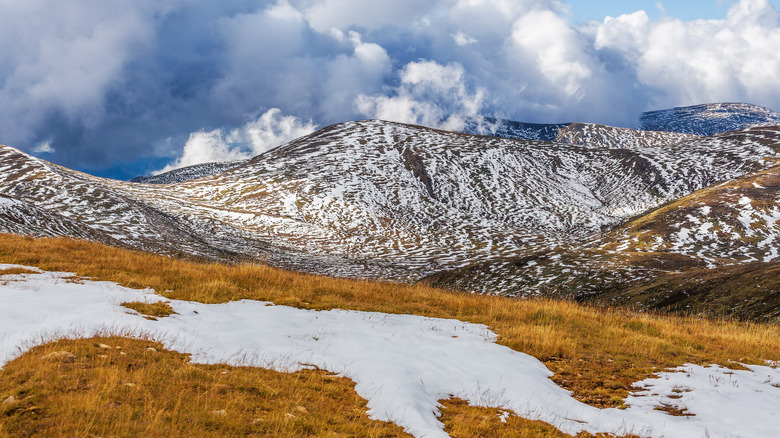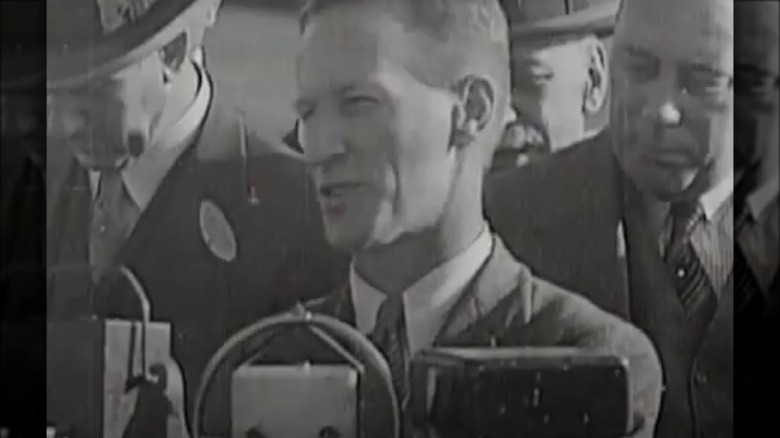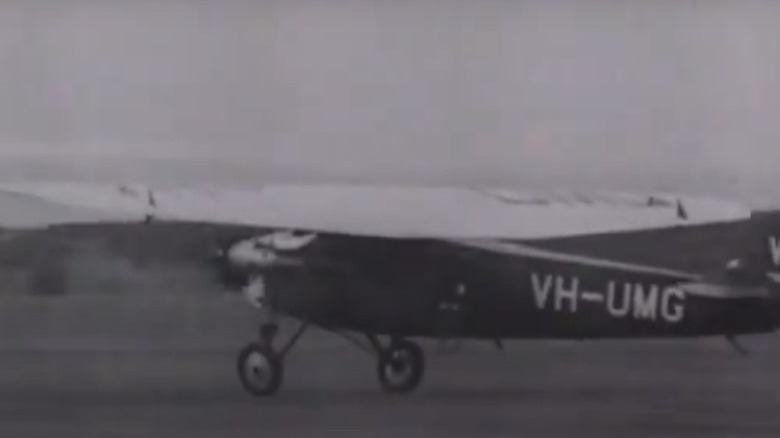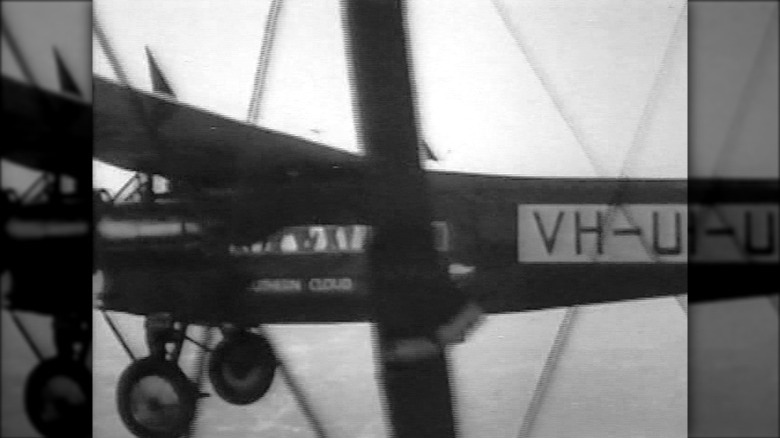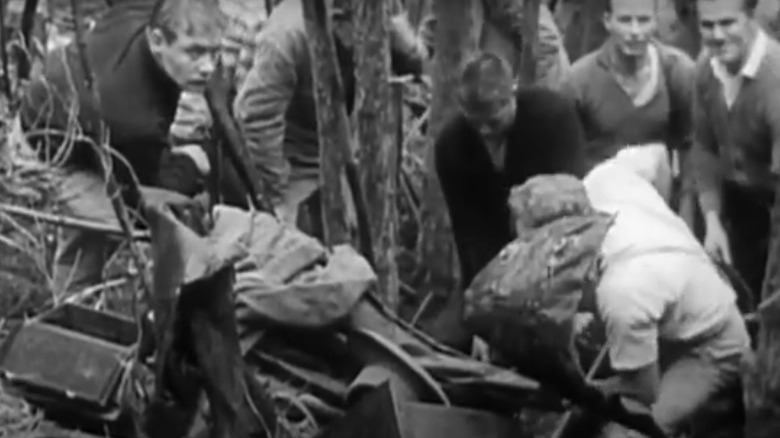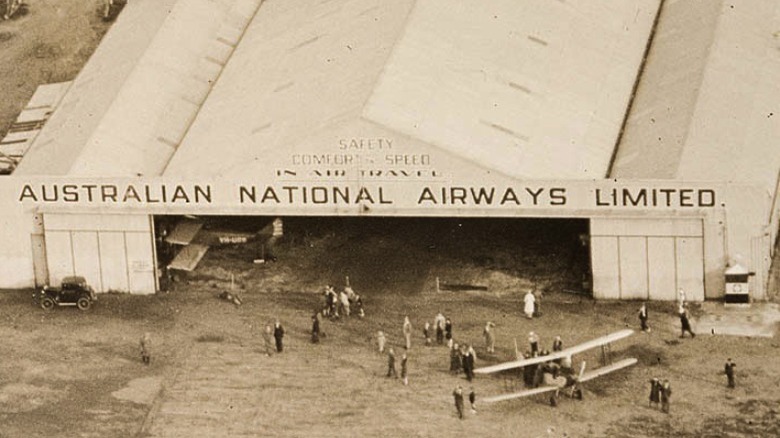How The 1931 Disappearance Of The Southern Cloud Plane Was Solved After 27 Years
On March 21, 1931 at 8:15 a.m. on a rainy Saturday, Southern Cloud, one of five Fokker Avro 10 airplanes operated by the fledgling Australian National Airways, per Flight Safety Magazine, headed down the runway of the Mascot Aerodrome in Sydney and climbed into the air. The plane was scheduled to arrive in Melbourne at 11:30 a.m., according to a contemporary article from the Sydney Morning Herald. Besides the pilot, a World War I flying ace named Travis 'Shorty' Shortridge, and his copilot, there were six passengers on board that morning, per ABC (Australia).
Shortridge was relying on a newspaper weather report compiled the night before, according to Smithsonian Magazine. As it would turn out, the report was way off base.Southern Cloud, like many commercial planes at the time, didn't have an onboard radio. As the small plane headed southwest, the weather turned nasty with high winds battering the plane and pushing it towards the Australian Alps; the highest mountain range in Australia, per Britannica. Southern Cloud was flying blind and unknowingly heading into the history books.
Two Celebrity Flyers Started Australian National Airways
A little more than two years earlier, in December 1928, Charles Ulm and his friend and fellow flier, Charles Kingsford Smith, launched Australian National Airways, Ltd., according to the National Museum of Australia. Smith and Ulm were the first pilots in the world to cross the Pacific Ocean by plane, traveling from California to Australia in June 1928, per the National Air and Space Museum. This achievement made the aviators instant celebrities. They parlayed their success into a new commercial venture that was flying passengers and mail in Eastern Australia using planes similar to Southern Cross, which were the same model of plane that they flew across the Pacific, per a 1929 article from The Miami Herald.
Traveling on an Australian National Airways flight was far from luxurious. If you think air travel is bad now, you definitely wouldn't have wanted to travel by plane back then. Like many other early commercial airlines, the seats on Southern Cloud resembled wicker lawn chairs. The ride was extremely loud and there were no amenities available to the passengers, per The Sun. Additionally, commercial air travel wasn't cheap. A flight from Sydney to Melbourne cost, according to the U.S. Inflation Calculator, was the equivalent of nearly $800, per The Miami Herald. For the six passengers on the March 21, 1931 flight, the cost would have been much steeper.
The Search for Southern Cloud
When Southern Cloud didn't arrive in Melbourne on time, no one was initially alarmed. The company assumed Shortridge stopped to refuel and decided against continuing on in the bad weather, per Flight Safety Magazine. But as the hours ticked away with no sign of Southern Cloud, the airline panicked. By the next morning, a massive search was underway, both by air and by land, according to a contemporary article from The Sydney Morning Herald. Australian National Airways suspended all of its flights so that the other pilots could aid in the search alongside the Australian Royal Airforce, per the Herald.
Both Charles Ulm and Charles Kingsford Smith took to the air to aid in the search. Ulm piloted his own biplane, an Avro Avian, per the Herald. Smith, flying a plane similar to the one that was missing, nearly died on his way to join in on the search after he crash landed in a swampy area, according to a 1931 Associated Press (AP) article printed in The Vancouver Daily Province. An extensive 18-day search turned up no trace of Southern Cloud, per Smithsonian Magazine.
One Lucky Passenger
Besides Southern Cloud's pilot and copilot, the six passengers who disappeared that day included two women flying home from a vacation, a young accountant with plans to expand his business, an electrical engineer, a business executive, and an American theater producer named Clyde Hood, according to The Sydney Morning Herald. Hood, who was working in Sydney at the time, was on his way home to visit his new wife, who was an actress living in Melbourne, per the Herald.
Stan Baker, a Sydney business owner, was supposed to be on the flight, but canceled at the last minute. He instead traveled to Melbourne by train, according to Traveller. He had a fear of flying after this narrow escape, but in 1950 took a flight anyway. This turned out to be a terrible decision because his plane crashed and he was killed, per Traveller. In the aftermath of Southern Cloud's vanishing, the Australian government recommended that all commercial airliners have a radio on board with someone qualified to operate the equipment to ensure planes had the most updated weather information, per The Canberra Times.
Nearly Three Decades Later the Mystery is Solved
On October 26, 1958, a construction worker named Tom Sonter for a massive hydroelectric dam project was hiking in the Snowy Mountains (part of the Australian Alps) on his day off when he stumbled across an old plane wreckage, per Flight Safety Magazine. "There was a small piece of steel poking through the leaves of the saplings," Sonter told Smithsonian Magazine. A search party arrived — as did souvenir hunters — at the crash site, which was located on a 5,000-foot-high mountain called World's End, according to a 1958 article by the AP that was published in The Santa Fe New Mexican.
Among the wreckage, searchers discovered bones and a metal luggage tag belonging to Clyde Hood, per the AP article. Civil aviation employees positively identified the serial number of the plane, ending the mystery of Southern Cloud's vanishing. The storm pushed the plane more than 25 kilometers (15 miles) off course and straight into the heavily-wooded mountainside, according to Flight Safety Magazine. By the time of the discovery, the two men who started Australian National Airways to begin with had also disappeared without a trace.
What Happened to the Men Who Started the Airline?
Strangely, both Charles Ulm and Charles Kingsford Smith vanished while flying and were both presumed dead. In December 1934, Ulm and two crew members were flying a twin-engine Airspeed Envoy christened Stella Australis. The flight was to start in Oakland, California and land in Honolulu, Hawaii. During this flight, the plane disappeared over the Pacific Ocean, according to the National Museum of Australia. Neither the plane nor their bodies were ever recovered. A year after Ulm's disappearance, Smith and his co-pilot vanished during a world-record attempt to fly from England to Australia, per the Daily Telegraph. The plane disappeared over the Andaman Sea off the Bay of Bengal and the two were presumed dead.
By the time Smith and Ulm vanished, so had their groundbreaking airline company. The November after Southern Cloud tragedy, Australian National Airlines suffered another disaster when a second plane went down on the Malay Peninsula of Southeast Asia, per Smithsonian Magazine. The two men decided to shutter the airline and go their separate ways. A marker dedicated to those lost in the Southern Cloud disaster now stands at the crash site, per Traveller. Southern Cloud made its way into history as the first commercial airliner to vanish. However, Southern Cloud wouldn't be the last flight to suffer a disaster.
